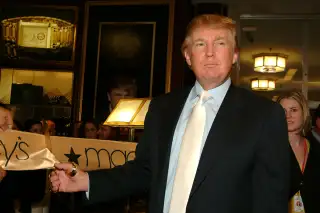This Controversial Tax on High Earners Is Key to Understanding Trump's Leaked 2005 Returns

If you watched Rachel Maddow's big Trump tax scoop Tuesday night, you may have heard about a puzzling feature of the tax code: the alternative minimum tax, or AMT.
MSNBC's Maddow, with the help of veteran tax reporter David Cay Johnston, broadcast parts of the President's alleged 2005 tax return, revealing he paid the IRS $38 million on income of $150 million.
But then there was this detail: Trump paid just $5.3 million in regular income tax, while owing $31 million in the alternative minimum tax.
What gives?
The U.S. actually has two separate tax codes: the regular code and alternative code, which has a different set of rules. The second, parallel code, which disallows many deductions and other tax perks available under the regular code, was created in the late 1960s after it came to light that — get this — a few dozen ultra-wealthy Americans were paying nothing in income tax. In theory, taxpayers are supposed to calculate what they owe under both sets of rules and pay whichever is higher, hence the tax's name: alternative minimum tax.
In recent years the AMT has become controversial. While originally designed only to ensnare the rich, inflation along with tax cuts passed during the George W. Bush Administration have meant millions of merely well-to-do taxpayers also owe the AMT. This year about 1 in 5 taxpayers earning more than $1 million are expected to owe the IRS extra money as a result of the AMT. An even greater share — about 60% — of those making $500,000 to $1 million will owe the tax, along with about 30% of those earning $200,000 to $500,000, according the Tax Policy Center.
Needless to say, the AMT isn't popular with taxpayers who see their bills rise because of it. Both Trump and House Speaker Paul Ryan call for eliminating it.
So how exactly did Trump lower his regular federal income tax bill enough to trigger the AMT? Reports that have come out about his 2005 tax return so far don't make it clear. But it is possible to take an educated guess. As a real estate mogul Trump is likely to have been able to deduct the (theoretically) declining value of assets he owns and past business losses — including perhaps the $900 million loss he reported in 1995 — from his income.